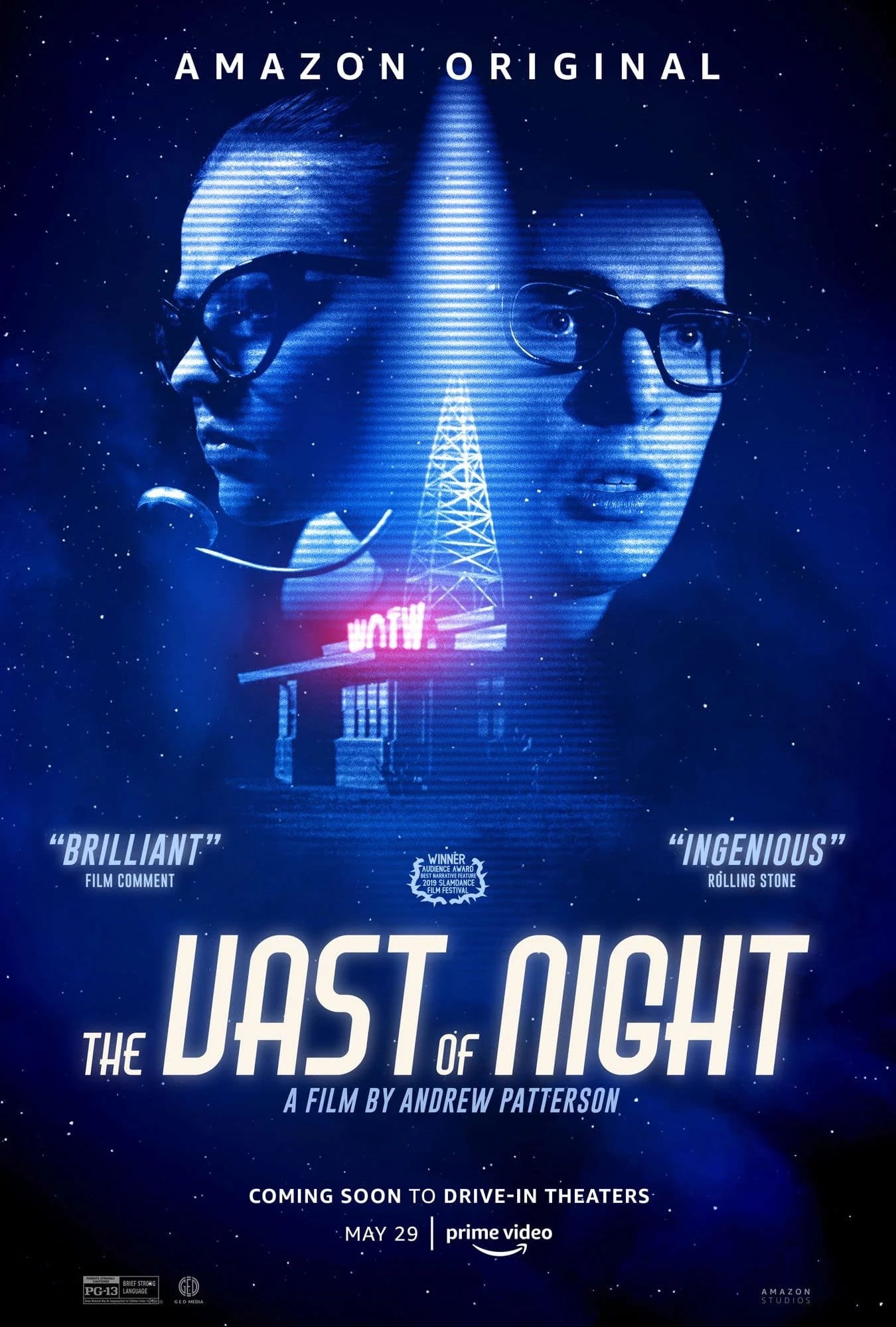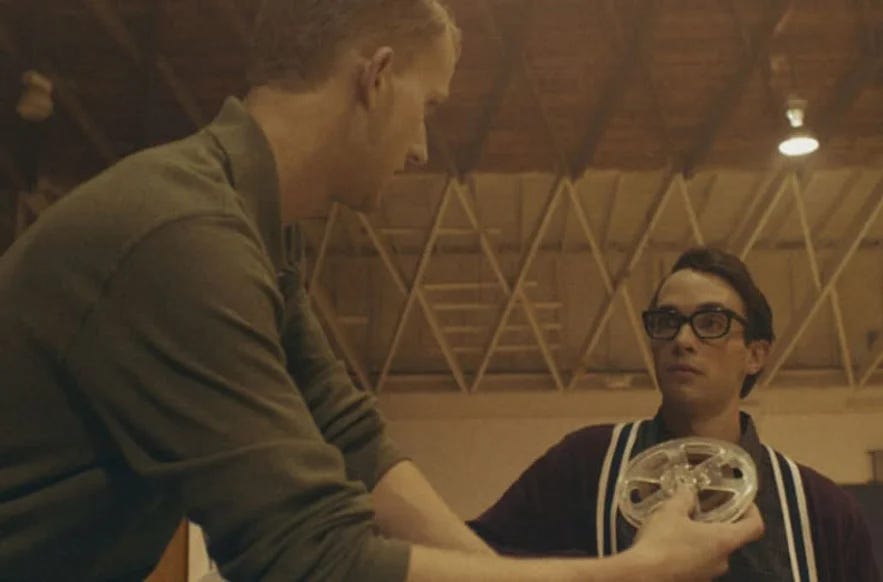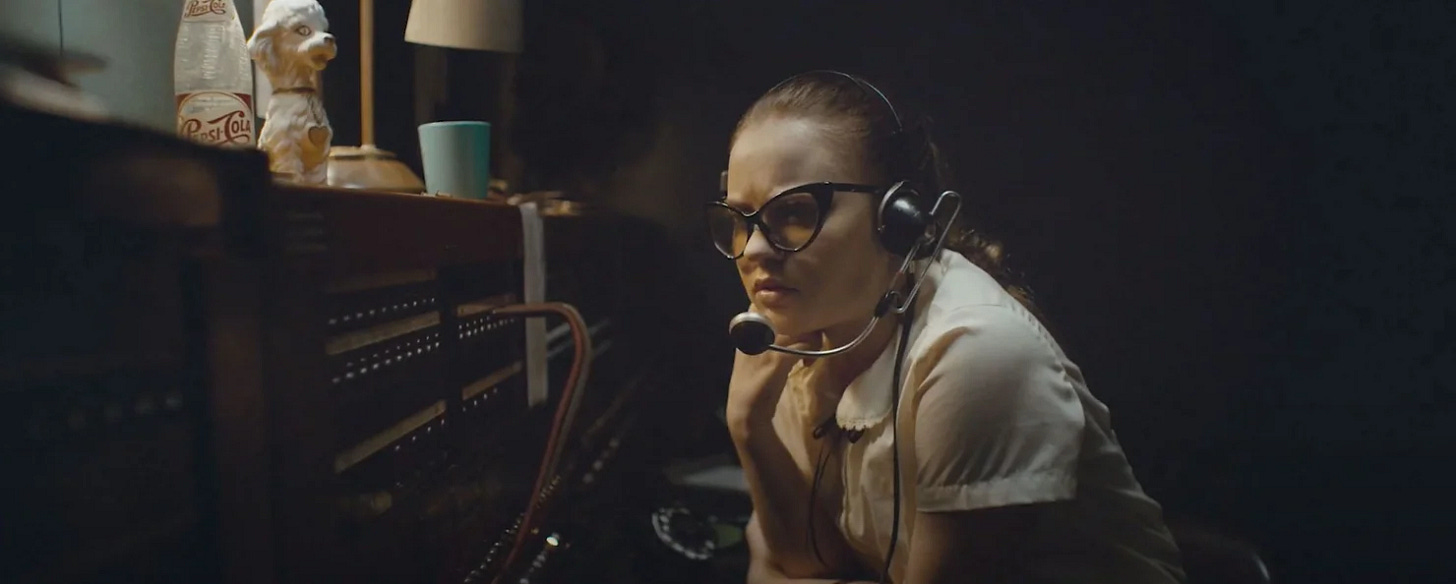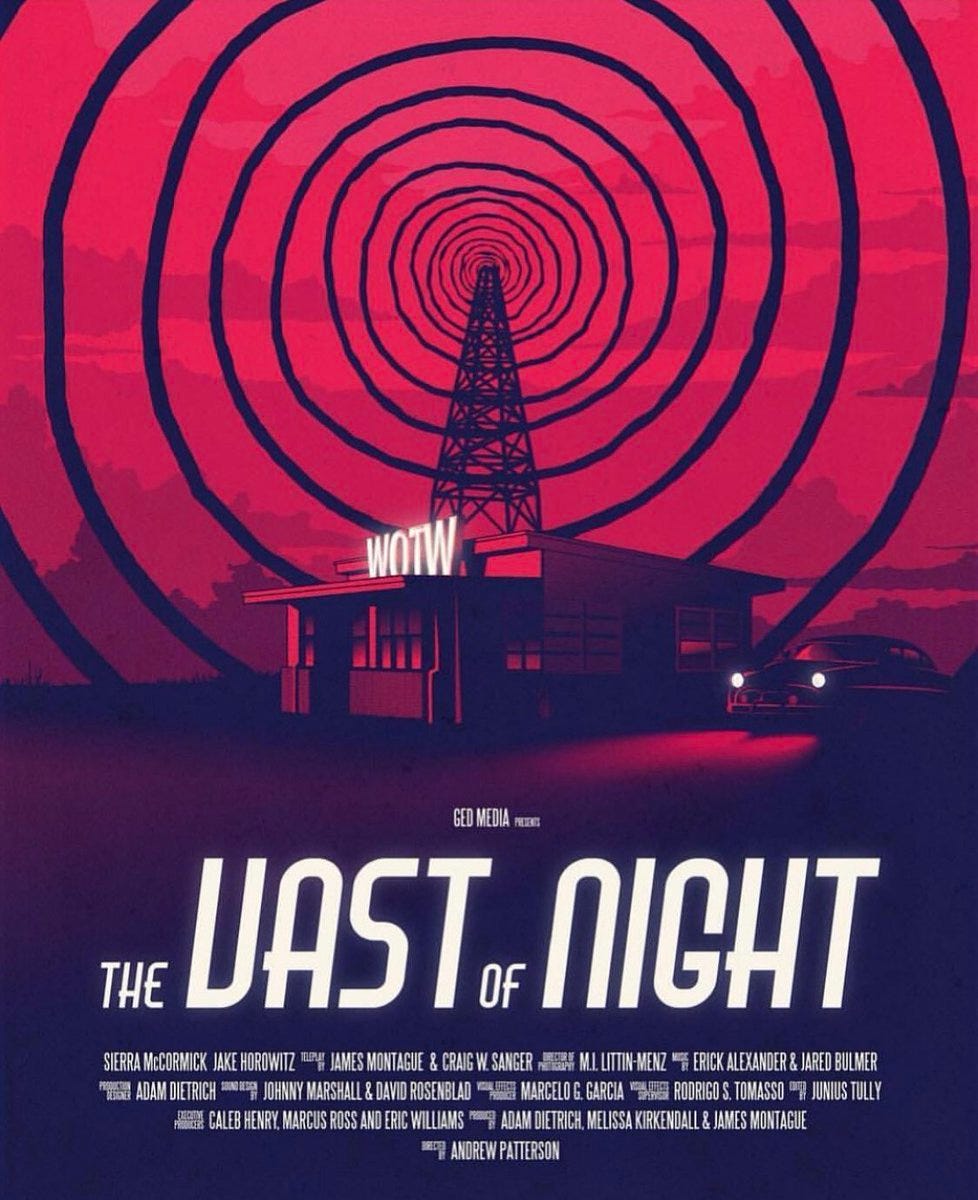It’s been four years since The Vast of Night began streaming on Amazon Prime. Although the movie was released at Slamdance in 2019, it didn’t get a lot of attention until it hit Amazon Prime in the early days of the pandemic. I’m planning on revisiting the film this week and wanted to post a revised version of my review from 2020.
The Vast of Night, released on Amazon Prime on May 29, is a love letter to The Twilight Zone, The X-Files, and other television shows that take us into extraordinary, unexplained worlds, often leaving us to find our balance between a state of fear and a state of wonder. Yet The Vast of Night is more than these things, and it could not have come to us at a better time.
In the film’s opening moments, I feared I would be inundated with a parade of sf clichés and well-intentioned homages. Our first recognizable image is that of a 1950s-style middle-class American living room, focused on a type of television set most people have seen only in museums. A voice, very much an imitation of Rod Serling, delivers an introduction patterned after those used in Serling’s monologues which began each Twilight Zone episode, yet this show is entitled Paradox Theater. Tonight’s episode: “The Vast of Night.”
On the television screen, we see another homage to Serling: a sign reading “Cayuga City Limit, New Mexico, Pop. 497.” As all hardcore fans know, Cayuga was the name of Rod Serling’s production company (as well as a lake in the Finger Lakes region of New York where Serling had a summer home) during the TZ years. As an avid TZ fan, I feared we might soon meet a bookish thick-spectacled man named Henry Bemis, a spoiled kid named Anthony Fremont, or even somebody carrying around a book titled To Serve Man. Thankfully, The Vast of Night has higher aspirations than simple imitation or parody.
Then something interesting and perhaps fascinating happens. As we watch the television show, two characters (one onscreen, one offscreen) discuss the upcoming ball game. The television’s image is in black and white, and as we transition to a shot outside of the Cayuga High School gymnasium, we’re still in black and white, but not for long. After this transition to color, are we still inside the world of Paradox Theater, or have we moved into a parallel real-life version of the story? Is this a real story turned into a teleplay for Paradox Theater?
We follow Everett (Jake Horowitz) as he walks into the school gym, conversing with a friend concerned about a possible power outage that could ruin tonight’s big basketball game. Everett is a good-looking young man with black-rimmed glasses and a '50s-style sweater, someone who may be trying to imitate the coolness of Buddy Holly, or maybe not. Everett’s speech is a fast mumble, slinging out slang terms and phrases he’s either making up on the spot or they’re so old no one remembers them anymore.
Or perhaps this is simply New Mexico lingo. Ironically, Everett tells a high school girl named Fay (Sierra McCormick), “I don’t know what you said, Fay. You sound like a mouse being eaten by a possum.”
Fay wants Everett to help her figure out how her new tape recorder works since she’s been afraid to try it out on her own. Everett knows something about recordings and voices: He’s the night disc jockey at the local radio station. In a long scene that seems to be headed nowhere, we journey with Everett and Fay as they try out her tape recorder. From reading several comments on social media, this is where many people seem to lose interest in the movie. “Nothing happens,” people will write. “This is boring.” Yet this long scene is essential.
Director Andrew Patterson wants to establish character, not only the characters of Everett and Fay but of the town itself, through the individual people they “interview” in trying out the tape recorder. We hear of marital difficulties and the HUAC hearings. We see ageism. We see examples of miscommunication. Fay even talks about something she read in a science magazine, an article that predicts that one day cars will have the ability to locate any destination through electronics and take you there. All of this gives us the feeling that we’ve been dropped into a fully-formed world spinning in its own orbit, just like the best episodes of The Twilight Zone.
These moments are also loaded with references that won’t make much sense until you’ve watched the film a second time, things I won’t go into here. There’s nothing purposefully cryptic going on, but upon a rewatch, you'll begin to see things and make connections.
Patterson is on target to become an excellent storyteller and a master of pacing1. Slowly the real story begins to emerge. At her job at the telephone switchboard, Fay gets a call that there’s something unusual hovering in the skies. She locks onto a strange, unexplained sound she can’t identify. After patching in the sound to Everett (now at the radio station), Fay listens as he broadcasts the sound through the airwaves, asking if anyone listening can identify the sound.
Someone calls in. They’ve heard this sound before.
Again, many people watching the film may get frustrated with the lack of technology, but Patterson is simply using the available tech at the time. More importantly, he’s doing something very smart: using the limitations of technology to heighten tension.
We can’t see the ex-soldier calling the radio station. Because we can't see him, we're forced to make our own determinations as to whether or not he might be lying or crazy. A later caller we don’t see claims to have further information about the sound. When she is finally revealed, the tension is quiet but intense.
Everett and Fay obviously don’t know what we know from 60 years of advancements in technology, and we actually have to forget what we know. We’re in the late ‘50s when no one had smartphones, cable TV, GPS, the internet, or anything approaching those things. The mystery - and the suspense - lay in what’s hidden and concealed, and it takes some real effort to uncover those things.
Yet Patterson is also concerned with how innocence and complacency can be shattered forever in an instant. We’ve felt the same thing lately during the past three months. Our lives changed quickly and radically, and even though we do have the technology Everett and Fay lacked in the late ‘50s, I’m not so sure we’re any better off. The amount of misinformation, wrong information, and flat out lies can be worse than not knowing anything at all. The Vast of Night, a story set in a remote town 60 years ago, speaks volumes to us in 2020.
But primarily The Vast of Night is a fun, well-structured, thought-provoking, smart science fiction film from an exciting new voice. For 90 minutes we can watch and enjoy a film that’s familiar, yet fresh. That’s something we can celebrate in these troubled times.
Patterson is currently in post-production for The Rivals of Amziah King, a crime thriller starring Matthew McConaughey and Kurt Russell set in rural Oklahoma. Filming wrapped up in August, 2023.







